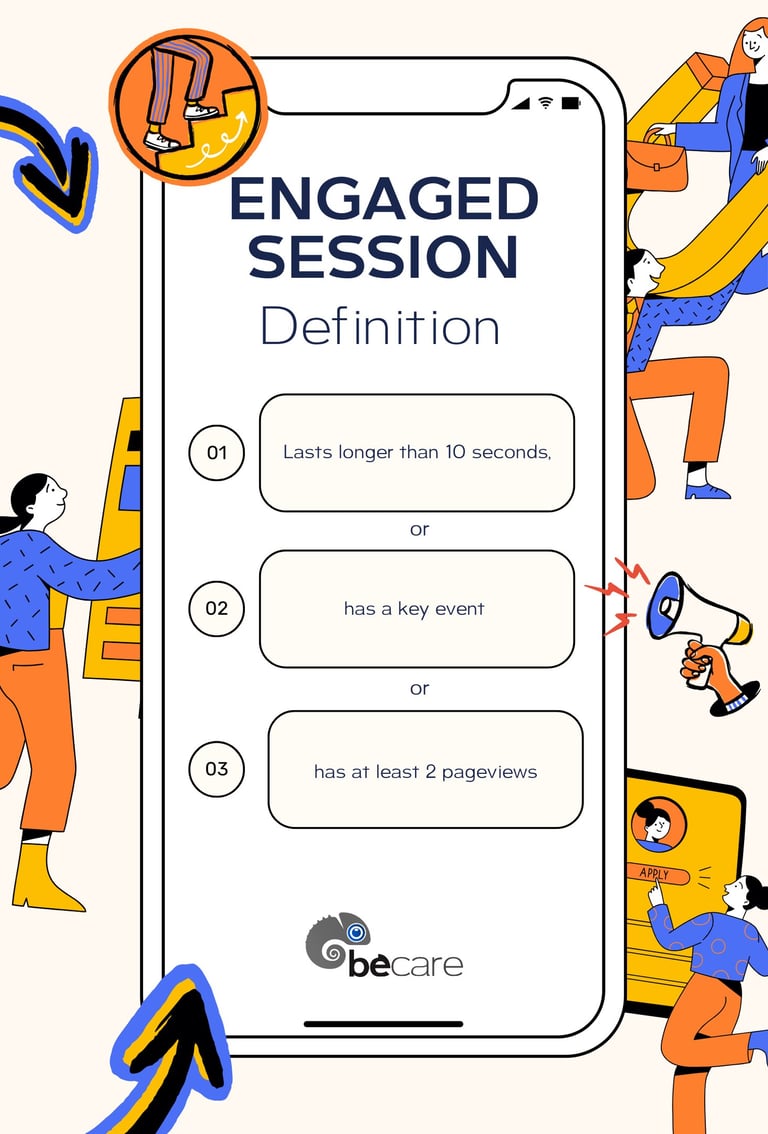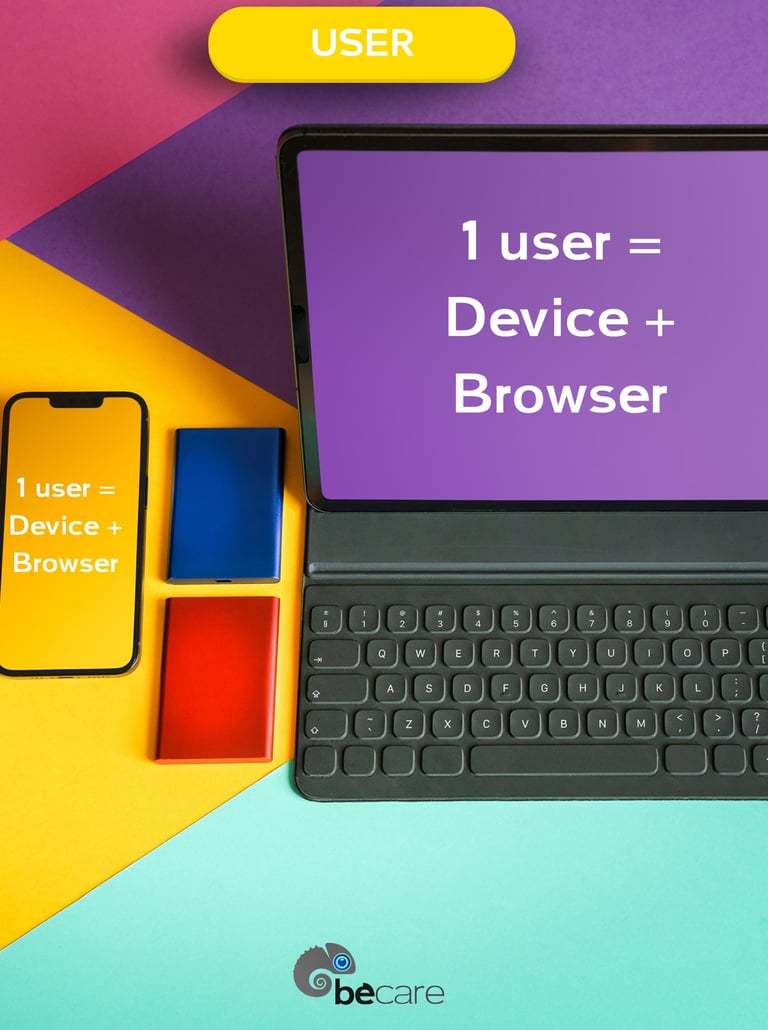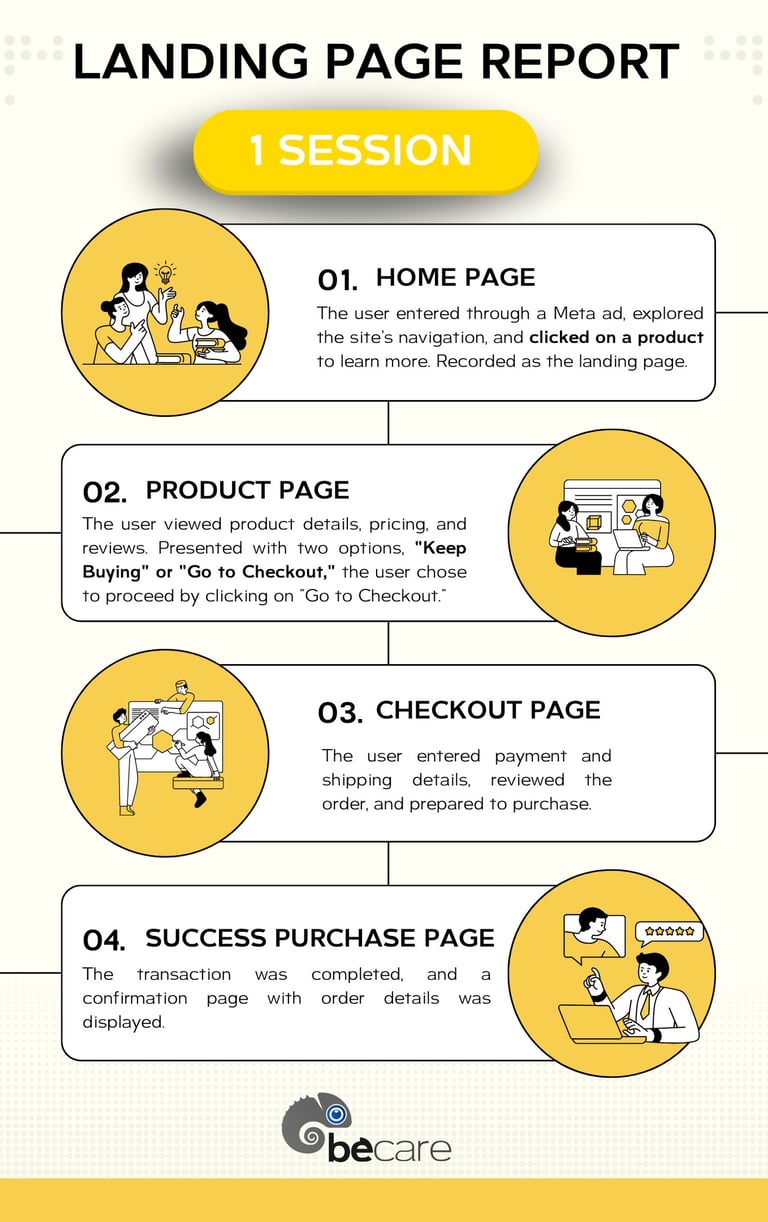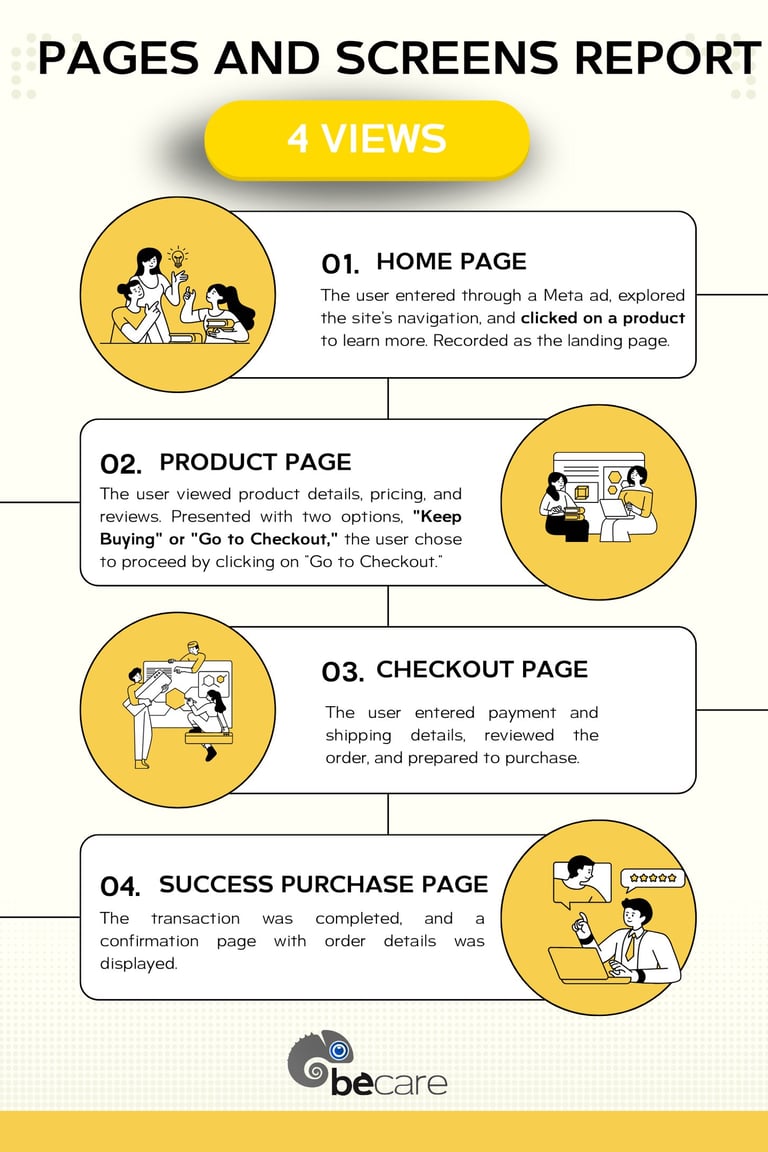In today's digital age, understanding how your website or app is performing is crucial for any business, especially for all businesses. Google Analytics 4 (GA4) provides invaluable insights into user behavior, allowing you to make data-driven decisions that can significantly impact your bottom line.
Why Understanding GA4 Is Important for Businesses
Small businesses operate in a competitive environment, often with limited resources. GA4 equips them with actionable insights into how users interact with their website or app. By understanding these analytics, small businesses can:
Identify the best-performing channels for attracting users.
Analyze customer journeys to find opportunities for improvement.
Optimize marketing budgets by focusing on what works.
With features like cross-platform tracking and event-based measurement, GA4 provides deeper insights into the full user experience, making it a valuable tool for growth.
Sessions and Users
What are sessions in Google Analytics 4?
A session in GA4 represents a single user visit during a specific time frame. Sessions begin when a user interacts with the site and can include multiple actions, such as page views or conversions. By default, a session ends after 30 minutes of user inactivity. However, the session timeout period can be adjusted; There is no limit to how long a session can last.
An engaged session is counted if:
The user engages with the site for more than 10 seconds.
It has at least two page views
A key event occurs, such as completing a purchase or signing up for a newsletter.
GA4 uses a session_start event to mark the beginning of a session, making it easier to analyze user activity during specific visits.
What Are the Users of Google Analytics?
Users in GA4 are identified as a combination of their browser and device. For example:
If a user accesses your site on a laptop and later on a mobile device, they may count as two users unless logged into an account.
GA4’s advanced User-ID feature can help unify data for users across devices if they log in.




User & Traffic Acquistion Reports
GA4 reports provide a wealth of information about how users interact with your site. Here are the key report types to understand:
User Acquisition
The User Acquisition report tracks how first-time users find your website. It provides insights into the effectiveness of channels like organic search, paid ads, or social media. This data helps you identify the best ways to attract new users and optimize campaigns accordingly.


Traffic Acquisition
The Traffic Acquisition report shows all traffic sources, including repeat visitors and sessions from returning users. Unlike user acquisition, this report highlights the overall performance of your traffic sources, helping you analyze their long-term impact.


User Acquisition vs. Traffic Acquisition: What’s the Difference?
The primary difference lies in focus:
User Acquisition: Tracks first-time users entering your site.
Traffic Acquisition: Tracks all sessions, including returning users.
Since repeat visitors often generate multiple sessions, traffic acquisition typically reports higher session numbers.
Landing page and Pages and Screens Reports
Landing page report
The Landing Page report shows the entry point for each user session.
Example: If a user enters the home page, goes to the product page, then the checkout page, and finally completes a purchase, only the home page will be attributed as the landing page for that session.


Key Metrics to Watch on Landing Pages
Sessions: Indicates how many user sessions started with a specific landing page.
Engaged Sessions: Tracks entry pages where users spent at least 10 seconds, viewed multiple pages, or completed a conversion.
Bounce Rate: Tracks how many users left without engaging further.
Key events Highlights the pages that lead to desired actions, such as purchases.
Pages and Screens Report
The Pages and Screens report tracks every page users visit, attributing a page_view event to each page. Unlike the landing page report, this report records all page views during a session.
For instance, in the same purchase journey:
The home page receives 1 view.
The product page receives 1 view.
The checkout page receives 1 view.
The purchase page receives 1 view.
This makes it easy to see which pages users visit most and how they navigate through your site.


How to Interpret the Page & Screen Report
Use this report to identify high-traffic pages.
Analyze the time users spend on each page to understand engagement levels.
Landing Page and Pages and Screens Learnings
The Landing Page report focuses on tracking user activity on the entry page, providing insights into how users arrive at your site and their initial engagement.
The Pages and Screens report tracks interactions on every page a user visits, offering a detailed view of user behavior across the entire session.
A key difference is how metrics are attributed:
The Landing Page report shows data for the session based on the first page visited.
The Pages and Screens report records data for every individual page visited.
For example, if you filter revenue in the Pages and Screens report, only the purchase page will display as it’s the page where the revenue event occurred. This distinction highlights the specific roles of each report in understanding user behavior.
Be Cautious
Avoid confusing metrics between reports:
Do not use views in the Landing Page report.
Do not use sessions in the Pages and Screens report.
Both metrics may appear to show similar numbers, but they serve distinct purposes:
Views are exclusive to the Pages and Screens report and count every time a page is loaded or viewed.
Sessions are exclusive to the Landing Page report and reflect user visits starting from a specific entry page.
Mixing these metrics can lead to inaccurate interpretations of user behavior and site performance.
Conclusion
Google Analytics 4 offers invaluable tools to help businesses track user behavior and optimize performance. By understanding the distinctions between sessions and users, and analyzing reports like user acquisition, traffic acquisition, landing pages, and pages and screens, you can gain actionable insights to improve your website’s effectiveness.



